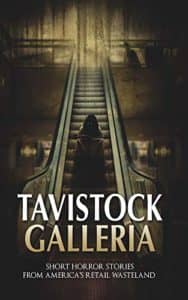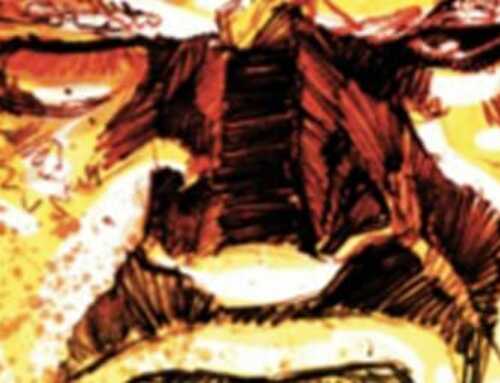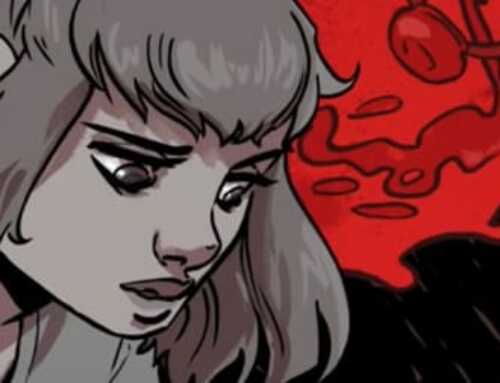 Tavistock Galleria is the second collection I’ve covered from Haunted House Publishing, and I’m pleased to report that this is a far more impressive offering in every way. The collection is a series of (eventually) connected stories which all involve the titular mall, long into its fall from grace but refusing to go quietly into the graveyard of brick and mortar retail. Maybe it’s the bias that comes from years of working in retail, and maybe its the fact that I’m so invested in haunted attractions and the creation of places to fear, but there’s something here I can’t help but love despite its minor flaws. There’s a lot to enjoy here, so let’s throw open the doors and take a tentative step into the carcass of Tavistock.
Tavistock Galleria is the second collection I’ve covered from Haunted House Publishing, and I’m pleased to report that this is a far more impressive offering in every way. The collection is a series of (eventually) connected stories which all involve the titular mall, long into its fall from grace but refusing to go quietly into the graveyard of brick and mortar retail. Maybe it’s the bias that comes from years of working in retail, and maybe its the fact that I’m so invested in haunted attractions and the creation of places to fear, but there’s something here I can’t help but love despite its minor flaws. There’s a lot to enjoy here, so let’s throw open the doors and take a tentative step into the carcass of Tavistock.
Based on the premise alone it should be obvious that nailing the setting is the most important part of a collection based on a dying mall. Thankfully, C.M. Scandreth knocks it out of the park from the word go with “Times Were Different Then”, a story which establishes the nature of Tavistock immediately with quick narrative jabs. The basement has been flooded and reclaimed by fish, the shelves are covered in a fine layer of dust, and there’s been at least one known murder which has contributed to the Galleria’s current state.
Nearly every story adds a new angle to the mall, something you’d find in any oversized retail supercenter spinning its wheels in the age of online shopping: an extravagant and potentially mesmerizing fountain. A carousel left in disrepair with a history that’s more than the sum of its parts. The husks of stores which can no longer compete, and the quick cash grab shops which naturally spring up in said husks. The cult in the radio shack. Tavistock Galleria is just so evocative that it feels like a place you’ve visited before, and which many of us have. What’s more, the blending of horror tropes over the closing mall feels almost too natural– there’s something apocalyptic about a previously booming center of commerce which would be thrilling and creepy to explore before we’ve even added a single element of the unmentionable.
That said, as strong as the collection is, it isn’t without some minor quirks. One of the first things I noticed as I flipped through the book was the acknowledgment of William Stuart– one of my favorite contributors from the prior collection– as the editor for this one. I’m ecstatic to see more attention paid to the editing and finishing touches on the book, and it’s miles ahead of the last one I covered in terms of typos and simple errors, but there are still occasional glaring hiccups. Phrases like “to place deep dark place” (page 55) have the potential to ruin the enjoyment of entire stories because of how thoroughly they break immersion, and there are several places in the book where smoothing awkward phrasing would have gone a long way. I understand this is a self-publishing venture, and from the looks of things it’s a moderately successful one, but the final quality is still just a hair’s breadth away from what I expect in a finished product.
I was also less than thrilled with the way Tavistock Galleria ended. I really liked the idea of places having souls, of heavily used buildings being mortal and taking steps in the interest of self-preservation. The concept of a building’s ghost is not only an interesting payoff but one that feels relevant and haunting in the modern era of declining foot traffic and shuttered strip malls. However, the final story feels too abrupt. The Galleria is laid to rest too easily, and I found the last short to be incredibly reductive with regards to the human monsters that continued to call Tavistock home. The purpose of the various factions we’ve been introduced to is well conceived, but those factions are immediately made farcical, which detracted a lot from my final impressions.
I would also highlight the illustrations which accompany every story in the collection, courtesy of Desdymona Howard. They set the tone for their stories quite well, and they’re worth revisiting after every story with context so that you can catch exactly what the artist was referencing. I recommend this collection to anyone who has worked in retail, to anyone who’s interested in exploring abandoned places, and to anyone who particularly enjoys exploring less than conventional settings. In no particular order, my highlights were:
- “Times Were Different Then” (C.M. Scandreth)
- “Life in Retail” (Charlie Davenport)
- “Closing Day” (William Stuart)
- “I Smelled Every One” (P.F. McGrail)
- “The Carousel of Tavistock Galleria” (Candice Azalea Greene)
Tavistock Galleria is available now in digital and paperback.







